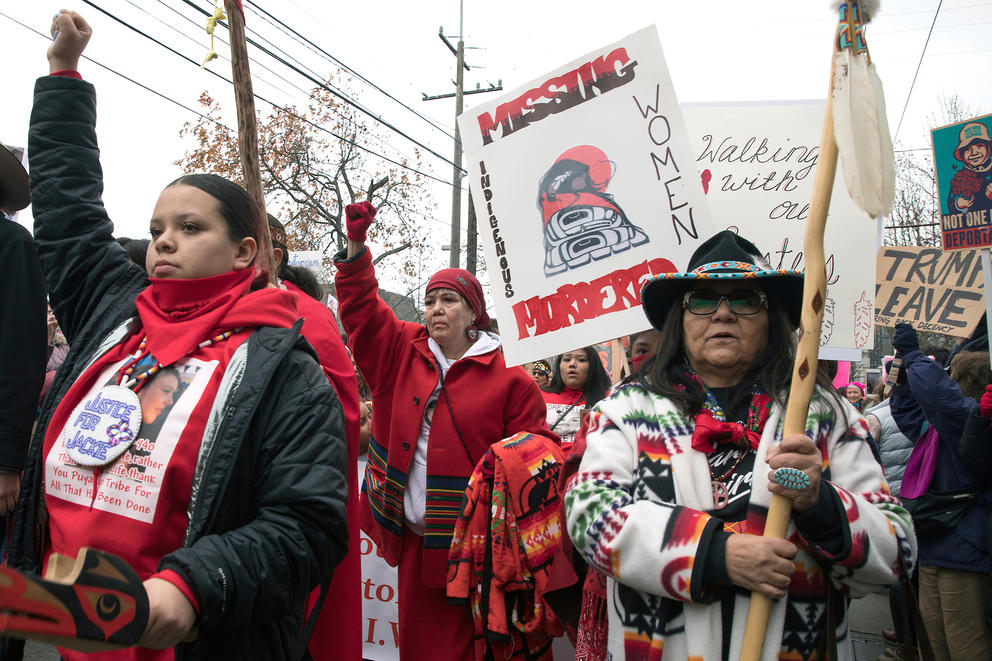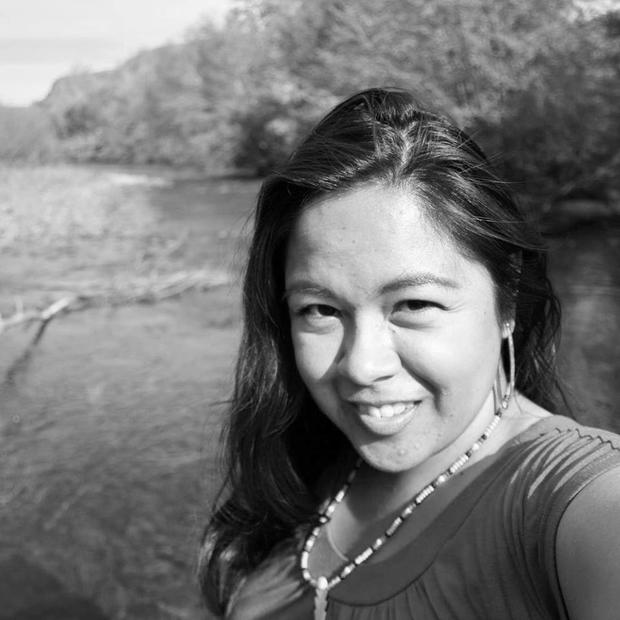After this op-ed was published, there were updates in two cases mentioned by the writer. We included them at the bottom of this piece. A warning: they contain details of homicide that some readers may find upsetting.
TOPPENISH, Washington — On the Yakama reservation the phrase be careful is often repeated to Yakama women. Still, many outside the Yakama Nation are unaware of the long history of violence against Native women, which is why it’s been called a silent crisis.
As a college student in the early 2000s, I spoke up with concern about the number of women who were missing or murdered. A couple of years after I transferred, I saw a classmate who repeated my words and laughed, disbelieving. It was confusing, because he and I got along. I was not laughing with him. My last words to him were: But it’s real.
In the time since that encounter, I have realized why he doubted my concerns: He had no context for missing Yakama women, because the community did not provide any information about them. In my classmate’s laughter and disbelief, I worried that I had failed our women.
“A recent federal study reported that Native American women are murdered at rates greater than ten times the national average,” reads a bill, passed by the Legislature in April, intended to acknowledge this silent crisis. “Many of these crimes, however, are often unsolved or even unreported because there are also very high rates of disappearance for Native American women.”
These words represent progress, but everything that led to this acknowledgement underlines how the dangers to Native women have been largely ignored — and how little attention and support these women have received from authorities or society as a whole.
Early this month, the Washington State Patrol released a 36-page report documenting the barriers to collecting information about missing Native American women and highlighting the need for federal, tribal, state and local authorities to collaborate more to find solutions. It concluded by noting, “Native American women face unique challenges with regard to safety and success.”
What the report found is troubling, but sadly not surprising. Since little information is publicly available regarding missing Native women, the state decided to travel to communities throughout the state to request information and first-hand accounts.
The report, ordered by the Legislature a year ago, states that there are 56 missing Native women in Washington. It’s heartbreaking to see that 20 of the state’s missing Native women cases — the most in the state — are in Yakima County, where I live. Unfortunately, the findings support what Yakama people have known since the first reports of missing and murdered Indigenous women were made to the U.S. government, stretching back as far as 1855, when gold miners first traveled through Central Washington to Colville. At one point, the miners murdered a mother, along with her daughter and baby, who was swaddled in a cradleboard. The widowed father killed the murderers.
This is the inciting event of the Yakama War, but the violence against Yakama women by miners in the fall of 1855 — right when the war began — is erased from most history books.
To prepare the report, the WSP held two community meetings in Yakima County to explain the process of gathering information about missing women in Washington state. I went to one, along with 225 other people, a turnout that impressed Capt. Monica Alexander, the author of the patrol’s report. Many in the packed room at the Yakima Convention Center shared their experiences in reporting their loved ones missing.
“It’s a problem, if you’re a traditional person, to not be able to lay your family to rest,” said Fidelia Andy, a Yakama elder and former tribal council member.
One woman, Jenny Mora, said: “I have been looking at lists, but do not see my sister, Roberta Raines, whom I reported missing to Yakama Nation Police, Toppenish Police, and [the] Sheriff’s Office in 2002.”
“Nobody would take the report,” she said, adding that only this year did she finally receive a call from a Toppenish detective.
These reporting issues continue to be a source of frustration. And their reality is borne out by Alexander’s response after the meeting. She said she had cross-referenced various lists of missing persons and found Roberta Raines’ name on just one list, the National Crime Information Center (NCIC). Because of the nature of reporting, it is necessary to list missing Native women on at least three lists: NCIC’s, the Washington State Patrol’s, and the National Missing and Unidentified Persons System (NamUS). Eight months after the meeting, Roberta is still not listed on two of the key databases that track missing Indigenous women. In speaking recently with Gov. Jay Inslee’s office, I confirmed that 47 of the 56 missing Native women are not on the three critical databases.
The inconsistencies among the lists themselves are also surprising, sometimes even to those who work on these issues.
“I expected to see some kind of missing person protocol,” said Deborah Maytubee Shipman, executive director of Missing and Murdered Indigenous Women (MMIW) USA.
And, in the eyes of some state advocates, the state patrol report left some important issues unresolved.
“This report did not determine the scope of the problem and lacked any meaningful analysis regarding the status of missing and murdered Indigenous women and girls in the state of Washington,” said Abigail Echo-Hawk, chief research officer of the Seattle Indian Health Board and director of the Urban Indian Health Institute. “[We need] solutions to address some of the major issues, like racial misclassification.” (When taking missing person reports, law enforcement sometimes erroneously marks an ethnicity other than Native American. State lawmakers recently passed a bill providing funding to hire two liaison positions within Washington State Patrol to help with this problem. The WSP report states this will take effect July 28.)
There seems to be growing interest among elected officials at various levels, including in Congress, to address this issue. But the truth is that Yakama people have been asking our Central Washington elected officials for help with our missing and murdered women going back 26 years. Last year, Congress failed to pass Savannah’s Act, a law aimed at increasing safety of Native women on reservations and in urban areas (that it didn’t pass was a sign that protecting Native women is not supported by some congressional representatives). This year, however, U.S. Rep. Dan Newhouse, R-Sunnyside, is co-sponsoring the law and requesting a long-awaited hearing in the Yakima Valley to collect information and testimony from Yakama women.
While many of us are excited about the growing interest, we remain cautious, as it might be a long policy process.
This WSP report itself provides a needed public reference point for our stolen sisters. But in a decadeslong silent crisis of missing and murdered Native women, the report registers as merely a whisper. Plus, there are no names listed in the report on missing women, which Capt. Alexander has called a “first volume.”
Using numerous sources, including a special Yakima Herald-Republic project and the families of some of the missing and murdered Indigenous women, I list here the names of eight of the 20 Native women from Yakama homelands who are currently missing: Alillia “Lala” Minthorn; Janice Marie Hannigan; Daisy Mae Tallman; Karen Johnley; Rosalita “Rose” Longee; Rosenda Strong; Roberta Jean Raines; and Freda Knows Gun. As for the others, why is it so difficult to know their names? This is something I continuously ask myself. The answer is long overdue, and one I hope will be shored up with the lawmakers' requested actions.
For now, the missing women and their families are on standby. The question that cries to me through the pages of the report is: Who are the missing Native women and how do we find them?
Editor's note: After we published this Op-Ed, Rosenda Strong's remains were found in a freezer on the Yakama Reservation on July 4, 2019. Strong was a member of the Confederated Tribes of the Umatilla Indian Reservation and a descendant of the Yakama Nation. Her death was ruled a homicide but remains under investigation.
UPDATE: After we published the above Editor's note, KAPP-KVEW reported that, on May 29, Alillia “Lala” Minthorn was found dead in a remote area of the Yakama Nation Reservation, according to federal court documents obtained by the news organization. An autopsy revealed that Minthorn had received a gunshot to the head. Her death was ruled a homicide.



